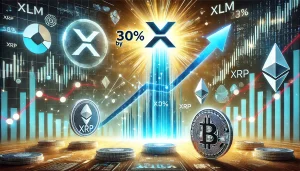
- The IMF highlights that BRICS is outpacing the G7 in key metrics, including GDP by Purchasing Power Parity (PPP), population share, oil production, and global economic growth.
- BRICS now controls 32% of the global GDP, 45% of the global population, and 41% of global oil production.
The International Monetary Fund (IMF) has highlighted that the BRICS alliance is outpacing the G7 in four significant areas. This underscores a reducing gap between the Western economic bloc and the other developing economies of the Global South. Also, the BRICS group has expanded significantly over the past year with plans to take over the international payments system.
BRICS Expansion & IMF Review
In 2023, BRICS saw its first expansion since its inception in 2001. It added four new members: the United Arab Emirates (UAE), Egypt, Ethiopia, and Iran. This milestone signals a shift in the bloc’s influence and suggests that its membership could continue to grow amidst the 2024 summit.
The IMF’s assessment reveals that the BRICS bloc is leading the G7 in four critical metrics. Notably, BRICS has surpassed the G7 in terms of GDP measured by Purchasing Power Parity (PPP). The bloc now holds a share of 32% compared to the G7’s 29%.
Another area where BRICS is making substantial strides is the global population’s share. The bloc now represents 45% of the world’s population, significantly more than the G7’s 30%. Whilst the maximum contribution to BRICS’ figures comes from India, with 1.4 billion population. The demographic advantage highlights the growing influence of the BRICS nations against Western counterparts.
Other Areas of Triumph
Moreover, oil production is another domain in which BRICS shows a commanding lead. The group controls 41% of global oil production, compared to the G7’s 29%. The block achieved this advantage with the recent inclusion of the UAE, a significant oil producer.
Also, ongoing cooperation with Saudi Arabia significantly contributed to the oil production statistics. Although Saudi Arabia is not yet a BRICS member, it has invested $5 billion in partnerships with the bloc.
The contribution of BRICS (Brazil, Russia, India, China, South Africa) to global economic growth is also substantial. The bloc now accounts for 44% of global economic growth. This figure is well above the G7’s contribution of 20%.
Meanwhile, the bloc is also planning to oust the U.S. Dollar (USD) from the international payment system. For their de-dollarization efforts, the bloc is looking forward to developing a new currency, possibly using blockchain technology. Moreover, Russia has legalized crypto mining and is working on establishing two crypto exchanges.
These exchanges would develop a BRICS stablecoin pegged with the Chinese Yuan as part of their first tasks. Thereafter, the countries associated with the bloc could resort to using the common currency instead of dependence on the dollar, weakening America’s global foothold.






















